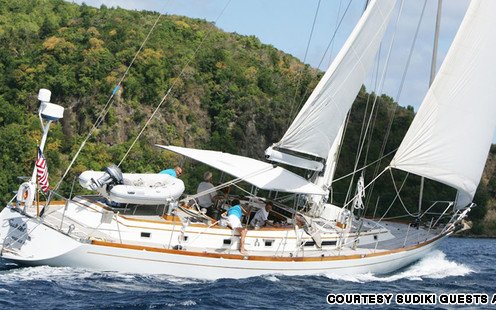Private Caribbean Cruises

The Dominican Republic is replete with pure beauty and area culture.
But people disembarking from Carnival’s vessels at cruise line’s huge Amber Cove complex regarding the nation’s northern coastline can ride zip outlines, look for in your area grown coffee in a replica Victorian village, or calm down in a thatched-roof hut in the water—without making the fenced-in residential property.
Versus exploring the country, Pierre Maloka, an application engineer from Weehawken, N.J., whoever voyage on Queen Mary 2 last November included a stop here, spent the day by Amber Cove’s pool, amused by a merengue musical organization and Dominican dancers. Explains Maloka: “You’re lying in the sun's rays, getting beverages and meals. What’s to not like?”
Amber Cove, which exposed in October, could be the newest of a few personal harbors becoming integrated the Caribbean by cruise providers. The outlines just like the services, since they can promote all of them as unique spots and hold much of the revenue from souvenirs, piña coladas, and paddle board rentals. Carnival expects above 350, 000 visitors to disembark this present year at Amber Cove, one of its six similar services in the Caribbean. Guests can certainly still keep the compounds, either on prearranged excursions—many sold by Carnival—or in taxis that wait only beyond the gates.
Geneva-based MSC Cruises is creating just what it says would be the largest cruise-line-run island, the $200 million Ocean Cay in the Bahamas, slated to open up in December 2017. The company is replanting 80 types of neighborhood woods, building a 2, 000-seat amphitheater for outside shows, and building a wedding pavilion. MSC can be creating a land-based version of the unique “Yacht Club” element of its ships that add butlers and a private coastline. “We’re using this to another degree, ” claims spokesman Luca Biondolillo.
The walled-off harbors aren’t constantly a respite from the real world. In January, Royal Caribbean Cruises suspended an end of the Freedom of the Seas in Labadee, its exclusive port in Haiti, after locals protesting the presidential election surrounded the ship in tiny ships. And not every cruiser welcomes the trend. “we thought cooped up in a very contrived and carefully built parcel, ” states Abigail Jones, a blogger which went to Amber Cove last year. “I believed as if I becamen’t inside Dominican Republic, because every little thing had been totally Americanized.”
Carnival is dealing with resistance from some residents associated with Bahamas over its want to build an exclusive end that may supplant traveler traffic from nearby Freeport. While Carnival and other outlines say they employ residents and buy regional items, the company-run services can steal business from nearby merchants and restaurateurs, claims Jean-Paul Rodrigue, a geography teacher at Hofstra University in Hempstead, N.Y., which studies the industry. “The cruise companies were good at recording that revenue for themselves, much less visits the neighborhood economic climate, ” he claims.
But unlike stepping-off the vessel into a slot filled with cargo ships, beggars, or building world difficulties, the services deliver what numerous consumers expect on island holidays. “They desire the Caribbean because they imagine that it is, ” says Giora Israel, Carnival’s senior vice-president for global port and location development. “They desire to deliver a selfie on a snowy time therefore everyone envies them.”





